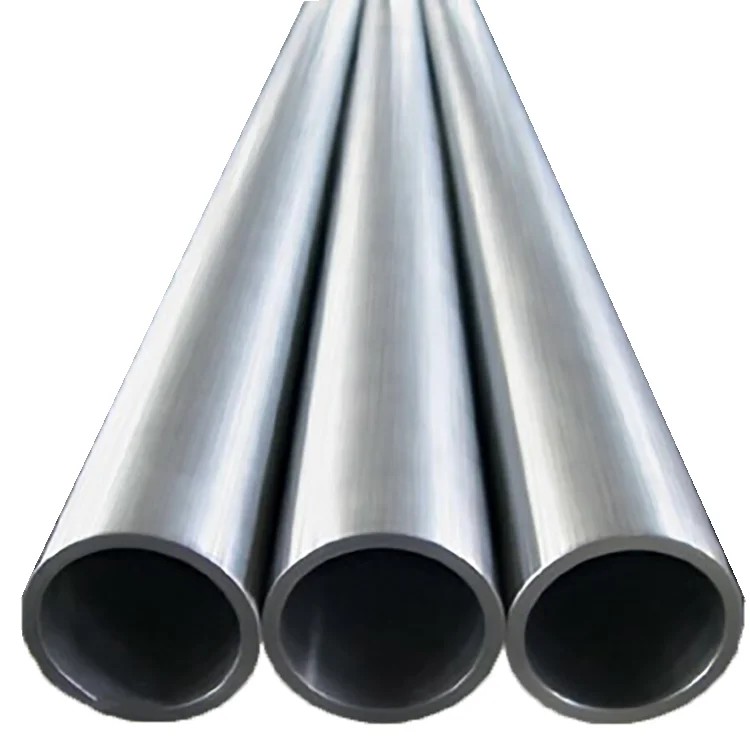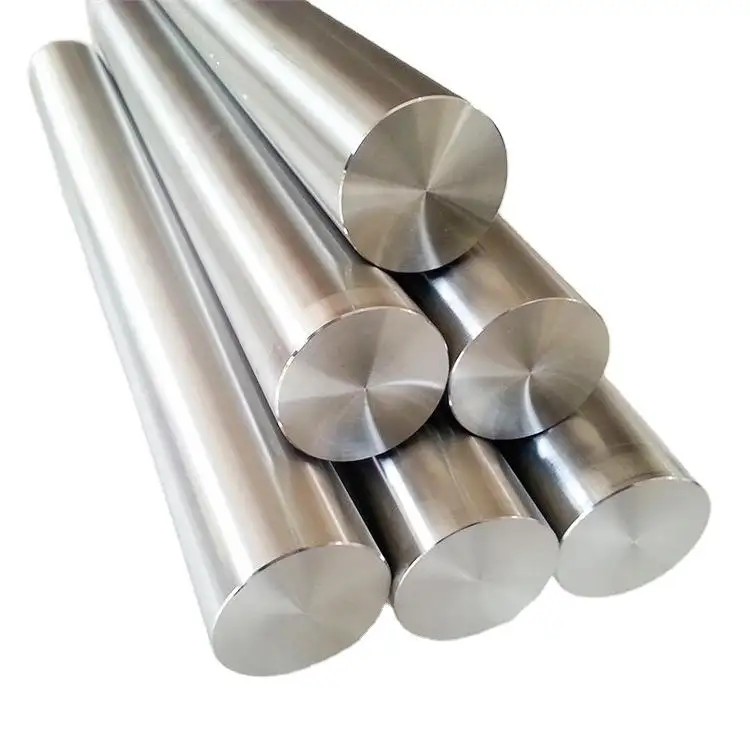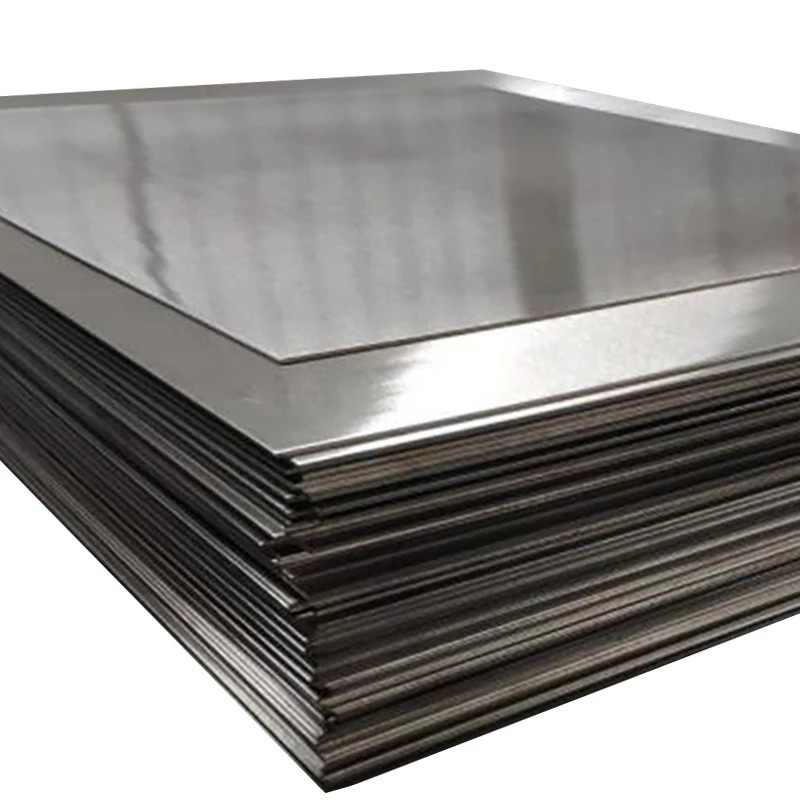GR2 Titanium Alloy
Titanium alloy has high strength and low density, good mechanical properties, good toughness and corrosion resistance. In addition, titanium alloy has poor process performance, difficult cutting, and is very easy to absorb impurities such as hydrogen, oxygen, nitrogen and carbon during hot processing. It also has poor wear resistance and complex production process. The industrial production of titanium began in 1948. The needs of the development of the aviation industry have led to the development of the titanium industry at an average annual growth rate of about 8%. The annual output of titanium alloy processing materials in the world has reached more than 40,000 tons, and there are nearly 30 titanium alloy grades. The most widely used titanium alloys are Ti-6Al-4V (TC4), Ti-5Al-2.5Sn (TA7) and industrial pure titanium (TA1, TA2 and TA3).
Material Uses
Titanium alloys are mainly used to make aircraft engine compressor parts, followed by rockets, missiles and high-speed aircraft structural parts. In the mid-1960s, titanium and its alloys were used in general industry to make electrodes for the electrolysis industry, condensers for power plants, heaters for oil refining and seawater desalination, and environmental pollution control devices. Titanium and its alloys have become a corrosion-resistant structural material. In addition, they are also used to produce hydrogen storage materials and shape memory alloys.
China began research on titanium and titanium alloys in 1956; in the mid-1960s, industrial production of titanium materials began and TB2 alloys were developed.
Titanium alloy is a new important structural material used in the aerospace industry. Its specific gravity, strength and operating temperature are between aluminum and steel, but it is stronger than aluminum and steel and has excellent seawater corrosion resistance and ultra-low temperature performance. In 1950, the United States first used it on the F-84 fighter-bomber as non-load-bearing components such as rear fuselage heat shields, wind guides, and tail covers. Since the 1960s, the use of titanium alloys has moved from the rear fuselage to the middle fuselage, and partially replaced structural steel to manufacture important load-bearing components such as bulkheads, beams, and flap rails. The use of titanium alloys in military aircraft has increased rapidly, reaching 20% to 25% of the aircraft structure weight. Since the 1970s, civil aircraft have begun to use a large amount of titanium alloys. For example, the Boeing 747 passenger aircraft uses more than 3,640 kilograms of titanium. Aircraft with a Mach number greater than 2.5 use titanium mainly to replace steel to reduce structural weight. For example, the US SR-71 high-altitude and high-speed reconnaissance aircraft (flight Mach number of 3, flight altitude of 26,212 meters), titanium accounts for 93% of the aircraft structure weight, known as an "all-titanium" aircraft. When the thrust-to-weight ratio of an aircraft engine increases from 4 to 6 to 8 to 10, and the compressor outlet temperature increases from 200 to 300°C to 500 to 600°C, the low-pressure compressor discs and blades originally made of aluminum must be replaced with titanium alloys, or titanium alloys must be used instead of stainless steel to make high-pressure compressor discs and blades to reduce the weight of the structure. In the 1970s, the amount of titanium alloy used in aircraft engines generally accounted for 20% to 30% of the total weight of the structure, and was mainly used to manufacture compressor parts, such as forged titanium fans, compressor discs and blades, cast titanium compressor casings, intermediate casings, bearing housings, etc. Spacecraft mainly use the high specific strength, corrosion resistance and low temperature resistance of titanium alloys to manufacture various pressure vessels, fuel tanks, fasteners, instrument straps, frames and rocket shells. Artificial earth satellites, lunar modules, manned spacecraft and space shuttles also use titanium alloy sheet welds.

Cutting characteristics
When the hardness of titanium alloy is greater than HB350, it is particularly difficult to cut. When it is less than HB300, it is easy to stick to the tool and is difficult to cut. However, the hardness of titanium alloy is only one aspect that makes it difficult to machine. The key lies in the comprehensive impact of the chemical, physical and mechanical properties of the titanium alloy itself on its machinability. Titanium alloy has the following cutting characteristics:
(1) Small deformation coefficient: This is a significant feature of titanium alloy cutting processing. The deformation coefficient is less than or close to 1. The sliding friction distance of chips on the rake face is greatly increased, accelerating tool wear.
(2) High cutting temperature: Since the thermal conductivity of titanium alloy is very small (equivalent to only 1/5 to 1/7 of No. 45 steel), the contact length between the chip and the rake face is extremely short, and the heat generated during cutting is not easily transmitted. Out, concentrated in the cutting area and a smaller range near the cutting edge, the cutting temperature is very high. Under the same cutting conditions, the cutting temperature can be more than twice as high as when cutting No. 45 steel.
(3) The cutting force per unit area is large: the main cutting force is about 20% smaller than when cutting steel. Since the contact length between the chip and the rake face is extremely short, the cutting force per unit contact area is greatly increased, which can easily cause chipping. At the same time, due to the small elastic modulus of titanium alloy, it is prone to bending deformation under the action of radial force during processing, causing vibration, increasing tool wear and affecting the accuracy of parts. Therefore, the process system is required to have good rigidity.
(4) The cold hardening phenomenon is serious: Due to the high chemical activity of titanium, at high cutting temperatures, it can easily absorb oxygen and nitrogen in the air to form a hard and brittle outer skin; at the same time, plastic deformation during the cutting process can also cause surface hardening. . The cold hardening phenomenon will not only reduce the fatigue strength of parts, but also aggravate tool wear, which is a very important feature when cutting titanium alloys.
(5) Tools are easy to wear: After the blank is processed by stamping, forging, hot rolling and other methods, a hard and brittle uneven skin is formed, which can easily cause chipping, making the removal of the hard skin the most difficult process in titanium alloy processing. In addition, due to the strong chemical affinity of titanium alloys to tool materials, tools are prone to adhesive wear under conditions of high cutting temperatures and large cutting forces per unit area. When turning titanium alloy, sometimes the wear of the rake face is even more serious than that of the flank face; when the feed rate is fr, the wear mainly occurs on the flank face; when f>0.2mm/r, the rake face will wear ; When using carbide tools for finishing and semi-finishing turning, it is more appropriate for the wear of the flank surface to be VBmax <0.4mm.
In milling processing, due to the low thermal conductivity of titanium alloy materials and the extremely short contact length between the chip and the rake face, the heat generated during cutting is not easily transmitted and is concentrated in the cutting deformation zone and a small range near the cutting edge. During processing, extremely high cutting temperatures will be generated at the cutting edge, which will greatly shorten tool life. For titanium alloy Ti6Al4V, as long as the tool strength and machine tool power allow, the cutting temperature is the key factor affecting tool life, not the cutting force.

Titanium alloy classification
According to the use, it can be divided into:
High temperature titanium alloy
The world's first successfully developed high temperature titanium alloy is Ti-6Al-4V, with a service temperature of 300-350℃. Subsequently, alloys such as IMI550 and BT3-1 with a service temperature of 400℃ and IMI679, IMI685, Ti-6246, Ti-6242 with a service temperature of 450~500℃ were developed. New high temperature titanium alloys that have been successfully used in military and civil aircraft engines include the British IMI829IMI834 alloys; the American Ti-1100 alloy; the Russian BT18Y and BT36 alloys, etc.
Titanium alloys based on titanium aluminum compounds
Compared with general titanium alloys, the biggest advantages of titanium aluminum compounds based on sodium Ti3Al (α2) and TiAl (γ) intermetallic compounds are good high temperature performance (maximum operating temperatures are 816 and 982℃ respectively), strong oxidation resistance, good creep resistance and light weight (density is only 1/2 of nickel-based high temperature alloys). These advantages make it the most competitive material for future aero-engines and aircraft structural parts.
Titanium alloy series: TA1, TA2, TA3, TA7, TA8, TA9, TA10, TA18, TB5, TC4, TC11, GR2
Nickel alloy series: GH3625, 4J36, N08811, UNSN08825, N08800, N08810, UNSN06600, UNSN06601, INCOLOY800/800H/800HT, INCOLOY825, INCOLOY840, INCONEL600, INCONEL601, INCONEL625, INCONEL690, INCONELX-750, HASTELLOYX, INCONEL718, INCOLOYA-286.

Get real-time quotes
Interested? Leave your contact details.
